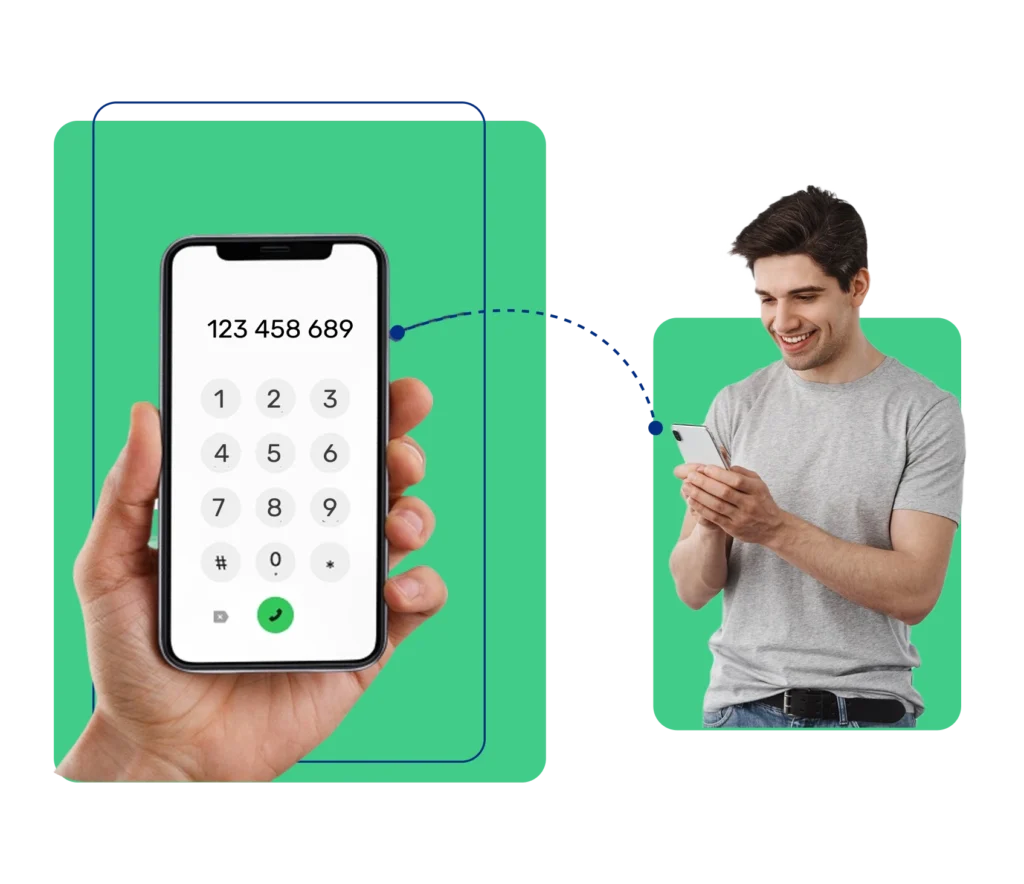Check Full Breakdown of Subscription Plans, Numbers & Call Rates! Learn More
Dialinger’s call transfer feature boosts customer service by enabling seamless call transfers between devices or departments without interruption. This VoIP system ensures the right expert handles each call, improving response times and overall communication. It reduces disruptions, streamlines workflows, and enhances professionalism across your organization. With smooth information exchange and efficient resource allocation, businesses can respond faster and solve issues more effectively. Dialinger transforms how you connect with customers offering a flexible, smart solution that elevates your service experience and strengthens internal collaboration.

Call Transfer offers numerous advantages, particularly for companies and professionals. They can make their communication processes more efficient, reach more customers, and possess a well-structured communication process through call-transfer service provided by Dialinger.
Smart call transfers reduce wait times, improving FCR and satisfaction.
Call transfers connect to experts, boosting satisfaction, loyalty, and advantage.
Call transfers route calls by team, improving coordination and response time.
Seamless call transfers ensure smooth experiences, faster resolution, improved efficiency.

In a phone system with VoIP technology, call transfer refers to the process wherein the receiver of a phone call can forward it to another agent who is sharing the number. Call transfers are carried out through either a desktop phone or an application.
With a VoIP phone system, the caller initiates the call transfer, and a codec converts the call into digital packets. The dialed number identifies the receiving agents while the VoIP server transmits these fragments. The VoIP server passes the information to it only after the device is authenticated. The agents initiate the transfer by clicking the extension or number of the agent they want to transfer to.
The VoIP system makes a new connection with the calling party, intercepts the communication, and puts the caller on hold. After the new connection is made with the destination agent, the caller is released to the receiving agent and the original connection is executed.
Efficient Call Routing: Transferring calls between team members, departments, or sites is hassle-free and doesn’t interrupt the call.
Blind and Warm Transfers: The system supports both blind transfers, which require no prior communication with the recipient, and warm transfers, which require a brief consultation prior to the transfer of the contact.
Remote and Mobile Transfers: Users can easily transfer a conversation on their mobile phone or softphone, giving remote and hybrid teams the flexibility they need.
Intelligent Transfer Options: Calls go to the right person based on availability, department, or skillset.
CRM and help-desk tool integration: It updates the agent tools during the contacts automatically. Hence, he/she can get the essential customer-related information to help him/her effectively.

Team Collaboration:
Ensures calls are redirected to available staff or the relevant department to keep teams connected.
Customer Handling:
Makes service better by quickly directing calls to the right help or salesperson.
Operational Efficiency:
Reduce callers’ wait times and enable smoother functioning by sending calls to the most suitable resource.
Crisis Management:
Assists with important help transferring calls to a higher support person or emergency service as needed.


To sum up, call transfer is a crucial component of cloud telephony solutions that enables businesses to ensure uninterrupted, professional, and quick communication. The call transfer feature helps enhance customer service, reduce wait times, improve internal communication, and even aid in crisis management by ensuring that every call reaches the right person at the right time. With smart routing, links to CRM programs, and the possibility of unobserved as well as warm transfers, this feature simplifies communications and strengthens customer relationships.
Whether startup or established enterprise, Dialinger offers seamless technology and support needed to thrive in both digital and remote worlds.
A call transfer means transferring an ongoing call to someone else but without the need to hang up on the caller. The type of transfer you can perform (a warm transfer where you introduce the caller to the agent or a cold transfer where you transfer without introduction) will depend on your phone system.
Warm transfer: When you talk to the receiver agent first, brief that agent about the caller’s issue, and then connect the caller. The procedure ensures a smoother customer experience.
Cold Transfer: When you transfer the call directly to the next agent without interacting with the caller.
Call transfers reduce connection time, prevent miscommunication, and increase call resolution rates on the first attempt.
Yes. With Dialinger, one can transfer a call to a phone number of their choice, which can either be a mobile phone, a landline, or a VoIP number.
Reliable Connection: Ensure that you have a reliable internet connection and your phone is configured properly.
Inaccurate Transfers: Train agents to confirm extension numbers before transferring.
Proper Tools: Be sure to access the necessary tools for each contact to facilitate the transfer process.
